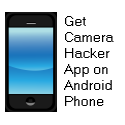Older Revision of Setting Up a Remote Web Cam
Revision: 20070720_220541 | All Revisions
Setting Up a Remote Web Cam
My wife and I just had a newborn. Traditionally, the Chinese newborn mothers get a full month of rest. They do nothing, except eat, feed the baby, sleep, and minor exercise when they feel up to it. They start on a low-sodium, low-sugar, and low-spice diet. This practice eliminates stress and helps The mother recover quickly. In Asian countries, it is relatively easy to find an "expert" to help at home. In the U.S., finding that Kind of help is virtually impossible.
On the other hand, there are many home nursing centers in large, Asian-populated U.S. cities. These nursing centers have one or more after birth "experts" to take care of the mother and the newborn. They will cook for the mother, change diapers, do laundry, and bring the baby to the mother for feedings. Most, if not all, of these nursing centers have WiFi access for the guests.
My wife checked into one of these nursing homes soon after giving birth. I, on the other hand, have to catch up on chores at home and at work. Nevertheless, I wanted to be with our baby and my wife all the time. Plus, my wife would feel better if I check in on her often. So I decided to set up a remote web cam for me to see them while I am away.
Purpose
In this article, I will explain how to set up a remote web cam on a Windows XP computer with a basic web cam. The same procedure works for a desktop or a notebook computer. I choose a basic web cam over a stand-alone network web cam because 1) I already have one; and 2) I don't have administration access to the remote router to allow outside viewing of the remote web cam.
It you are familiar with Linux, you can substitute a Linux computer. I chose Windows XP because that is what my wife is running on her notebook computer; I didn't want to set up another computer in her room.
Concept
The idea is to have the remote web cam computer capture and transmit images over the WiFi link to a web server. The remote web cam computer can't serve the image itself because it is behind a firewall/router that you don't have permission to re-configure.
The web server can be one you set up at home or at a web hosting service. You may already have one that can be used for this purpose. Setting up a web server or a web hosting service is beyond the scope of this article.
Software
Fwink is a free, open source web cam software for Microsoft Windows 98, ME, 2000, and XP. I choose this software because my wife's computer runs windows XP. It being free, open source, and small are also big pluses. It also serves my need because it can transfer images over the network to my web server. You can get a copy of Fwink from "Related links" below.
Its only shortcome is that it only supports the FTP for network transfer. It's less secure than some other transfer portocols. I could live with this insecurity for a month. Most web hosting services supprt FTP uploads. You can set-up a FTP daemon on your own web server quite easily. Check out the "" and "" articles in "Related Links" below for more details.
Imaging Device
You can use any imaging device that your operating system recognizes. I've use the IBM PC Camera (USB web cam) and the Sony DCR-TRV350 Handycam (Firewire); they both work. See these articles to set-up these devices:
Setting Up Fwink
Set Up the Web Page
Once Fwink is running, and is successfully uploading images to the web server, it's time to build a web page to display the image and automatically refresh. To teach you how to write web pages would take a whole book and is out of the scope for this article. So in this article, I will present a simple web page that only displays the image and includes the code to automatically refresh. You can customize it to jonr liking.
[show index.html]Archiving Sequencial Images
[Fwink doesn't allow you to save the images by time. You can only give it one name.]709 Users Online
|
$10000-above $5000-$9999 $2000-$4999 $1000-$1999 $500-$999 $200-$499 $100-$199 $50-$99 $25-$49 $0-$24 Gift Certificate |
|




